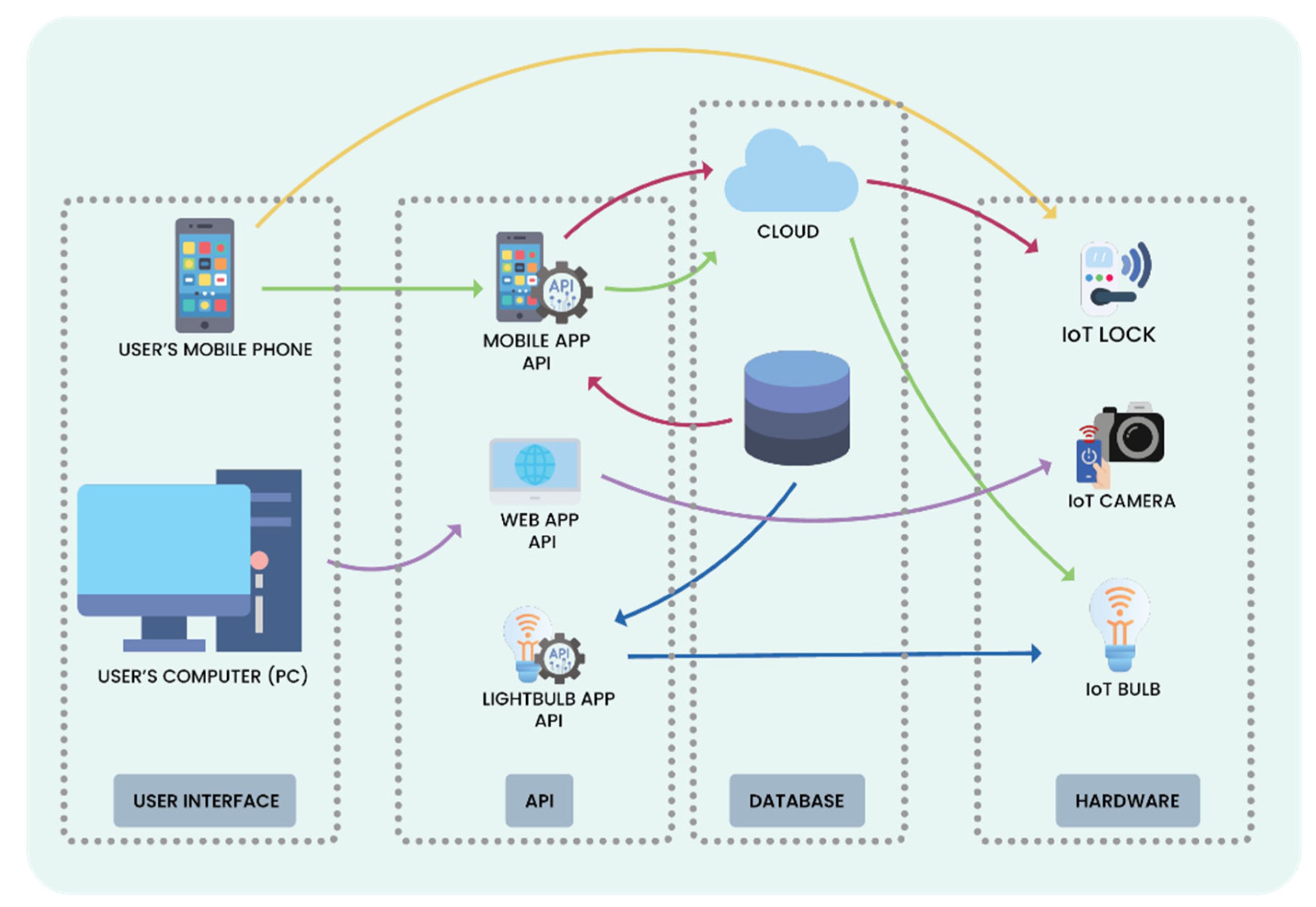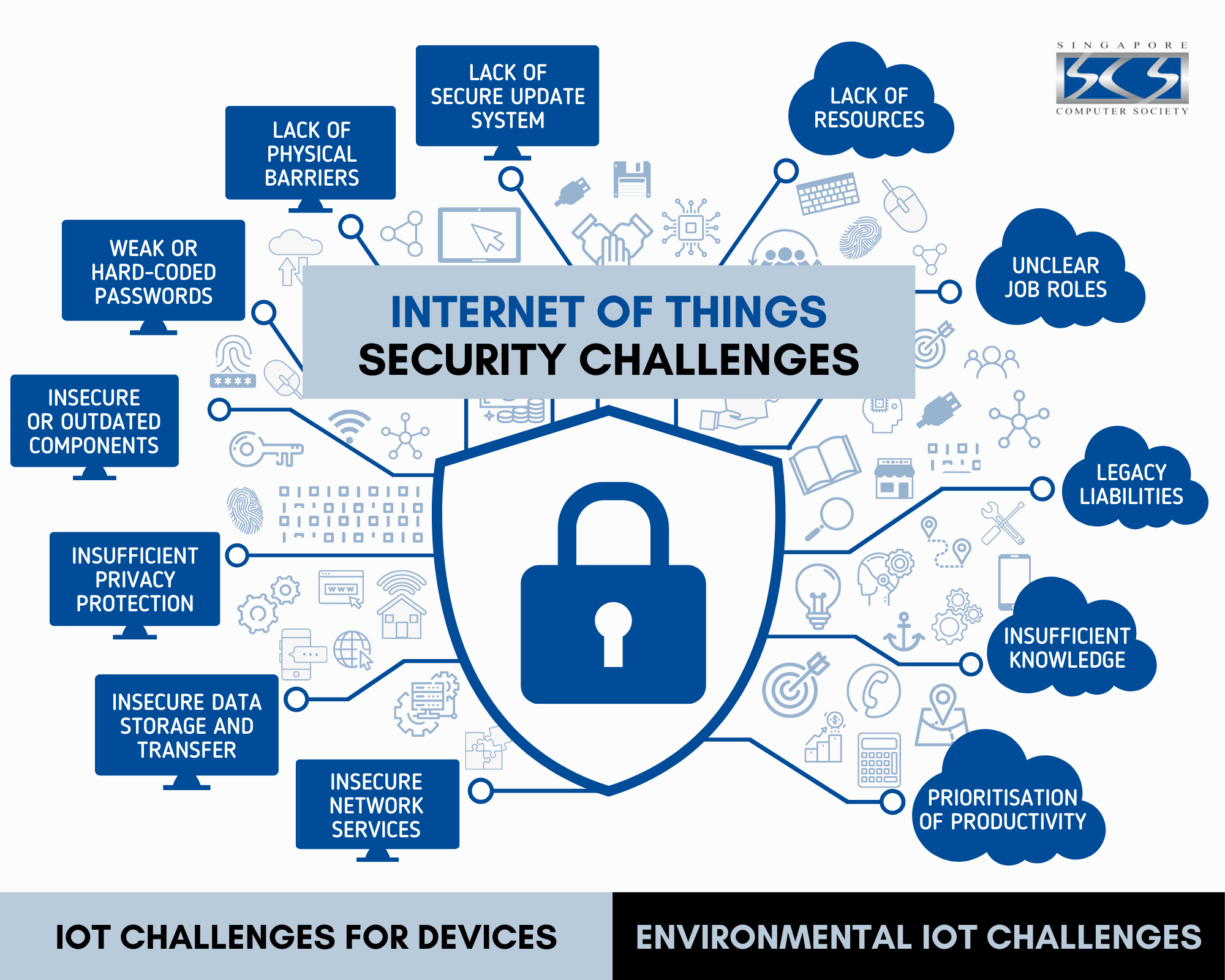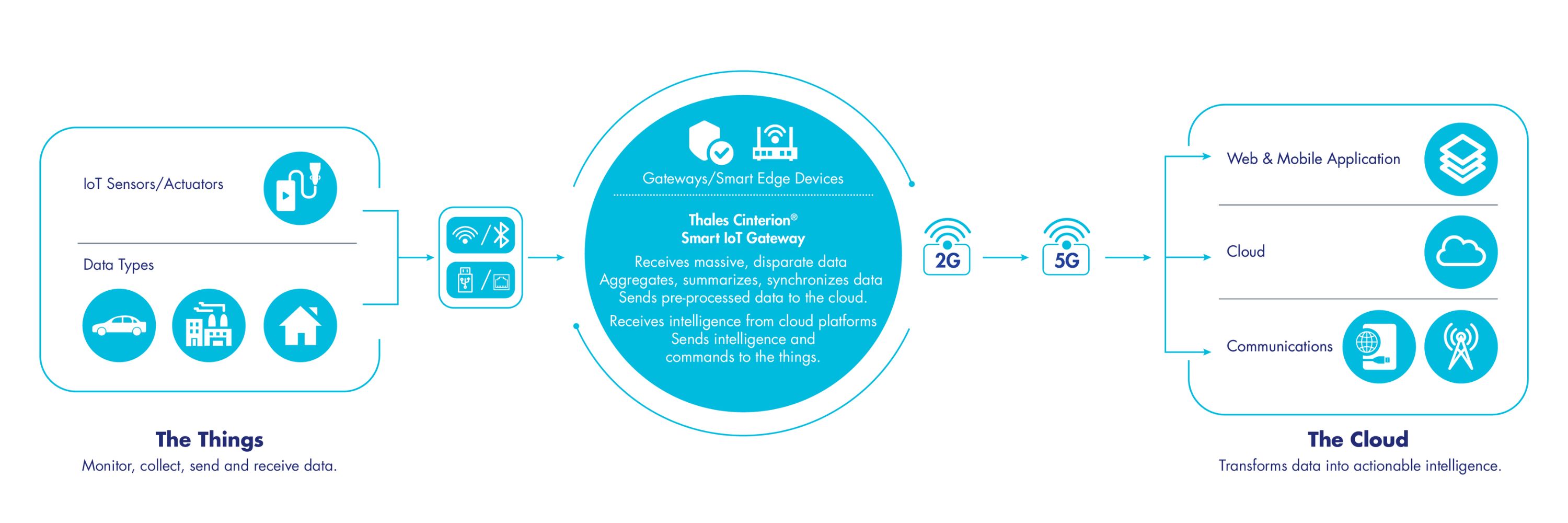Introduction
The Internet of Things (IoT) has revolutionized the way we live and work, connecting billions of devices to the internet, ranging from smart home appliances to industrial machinery. While the IoT brings numerous benefits, such as increased convenience and efficiency, it also presents new cyber threats that can compromise the security and privacy of both individuals and organizations.
As IoT devices continue to proliferate, it is crucial to understand and mitigate the risks associated with them. This article explores the most prolific cyber threats that stem from IoT devices, shedding light on the potential dangers and offering insights on how to safeguard against them.
From botnets to data breaches, ransomware to privacy invasion, and physical threats, the following sections examine the diverse range of cyber threats that exploit vulnerabilities in IoT devices. By understanding these threats, individuals and organizations can better prepare themselves to protect their networks and sensitive data.
It is important to note that the dynamic nature of the cyber landscape means new threats continually emerge. Therefore, it is crucial to stay vigilant and keep up with the latest security practices to stay one step ahead of cybercriminals.
Botnets
One of the most prevalent cyber threats from IoT devices is the formation of botnets. A botnet is a network of compromised devices, often comprised of IoT devices, that are controlled by a single attacker. These devices, unknowingly to their owners, become part of a botnet when they are infected with malware. The attacker can then use the botnet to carry out various malicious activities.
Botnets are typically used to launch distributed denial of service (DDoS) attacks, overwhelm a targeted server or network with a flood of incoming traffic, rendering it inaccessible to legitimate users. By leveraging the combined processing power of numerous devices, a botnet can generate an immense number of requests simultaneously, overwhelming the target’s resources.
The ability of IoT devices to connect to the internet and their sheer numbers make them appealing targets for botnet operators. Many IoT devices have default or weak passwords, making them easy to compromise. Moreover, the lack of proper security measures in IoT devices, such as firmware updates and vulnerability patching, further exposes them to potential attacks.
To mitigate the threat of botnets, it is essential to secure IoT devices by following best practices. This includes changing default passwords, keeping the firmware updated with the latest security patches, and regularly monitoring network traffic for suspicious activities. Implementing strong firewalls and intrusion detection systems can also help detect and prevent botnet infections.
Furthermore, network administrators should consider segmenting their networks, separating IoT devices from sensitive data and critical systems. This way, even if an IoT device is compromised, the attacker’s access is limited to the segmented network, reducing the potential impact on other systems.
Overall, the rise of botnets targeting IoT devices is a significant concern. As more IoT devices continue to be interconnected, the importance of securing these devices against botnet infections cannot be overstated. By adopting robust security measures and staying vigilant, individuals and organizations can fortify their defense against botnet attacks.
Distributed Denial of Service (DDoS) Attacks
Distributed Denial of Service (DDoS) attacks are a significant and ongoing threat in the IoT landscape. These attacks aim to overwhelm a target’s network or website by flooding it with an overwhelming amount of traffic, rendering it inaccessible to legitimate users.
IoT devices are increasingly being exploited to launch DDoS attacks due to their interconnected nature and often weak security measures. Hackers can compromise thousands or even millions of IoT devices and use them to create a botnet, which is then controlled to execute a coordinated DDoS attack. The combined power of these compromised devices can generate a massive volume of traffic that can easily overwhelm servers and infrastructure.
One of the challenges with addressing DDoS attacks from IoT devices is that many of these devices have limited computing resources, making it difficult to detect and prevent attacks. Additionally, IoT devices often lack adequate security mechanisms, such as traffic filtering or anomaly detection, making them vulnerable to being enlisted in botnets or being used as amplification points.
To defend against DDoS attacks, organizations must implement robust security measures. This includes deploying dedicated DDoS mitigation solutions that can detect and mitigate attacks in real-time. Network traffic monitoring and analysis should be performed to identify abnormal traffic patterns and potential attacks from IoT devices.
Another approach is to employ rate limiting and traffic filtering techniques to weed out suspicious traffic originating from IoT devices. This can help identify and block malicious traffic from reaching the target network, minimizing the impact of an attack.
Additionally, organizations should consider implementing redundancy and failover mechanisms, ensuring that their infrastructure can handle sudden surges in traffic and remain accessible even during DDoS attacks. This can involve utilizing load balancers, content delivery networks (CDNs), and distributed server architectures to distribute traffic and mitigate the impact of an attack.
Education and awareness are also key in preventing DDoS attacks. By educating users about the importance of securing their IoT devices and providing guidelines on how to change default passwords, update firmware, and ensure the overall security of their devices, we can collectively minimize the number of vulnerable IoT devices that can be exploited in DDoS attacks.
Overall, the increasing prevalence of DDoS attacks from IoT devices highlights the need for robust security measures and proactive defenses. By implementing advanced protection mechanisms and promoting security awareness, organizations can better defend themselves against this persistent cyber threat.
Data Breaches
Data breaches are a grave concern when it comes to IoT devices. These devices collect and transmit vast amounts of valuable data, making them attractive targets for hackers and cybercriminals. A data breach involving IoT devices can result in the exposure of personal information, sensitive business data, and even intellectual property.
One of the main reasons why IoT devices are susceptible to data breaches is the lack of robust security measures. Many devices often have weak or default passwords, making them easy targets for unauthorized access. Additionally, IoT devices may not receive regular security updates or patches, leaving them vulnerable to exploitation by hackers.
Attackers can leverage various techniques to breach the security of IoT devices, such as exploiting software vulnerabilities, conducting brute-force attacks, or exploiting weak encryption protocols. Once compromised, hackers can gain access to sensitive data stored on the devices or intercept data being transmitted across networks.
Organizations and individuals can safeguard against data breaches by adopting best practices for IoT device security. This includes changing default passwords to strong and unique ones, regularly updating firmware with the latest security patches, and using secure communication protocols, such as HTTPS or VPNs, to protect data in transit.
Implementing robust authentication processes, such as two-factor authentication, can add an extra layer of security to IoT devices. This ensures that only authorized individuals can access and control the devices, reducing the risk of unauthorized access and data breaches.
Encryption is also crucial in protecting data stored on IoT devices. By encrypting sensitive data, even if an attacker gains access to the device, the data will be indecipherable without the encryption key, minimizing the impact of a potential data breach.
Furthermore, organizations must establish proper network segmentation to isolate IoT devices from other critical systems. This prevents an initial compromise of an IoT device from compromising the entire network and sensitive data.
In the event of a data breach, organizations should have incident response plans in place to detect and address the breach promptly. Regular security audits and vulnerability assessments should also be conducted to identify and address any weaknesses before they can be exploited.
By prioritizing security measures, organizations and individuals can reduce the risk of data breaches from IoT devices. Protecting the confidentiality, integrity, and availability of data is essential in building trust and maintaining the privacy and security of IoT ecosystems.
Ransomware
Ransomware has become a pervasive and lucrative cyber threat that has also extended its reach to IoT devices. Ransomware is a type of malware that encrypts files on infected devices, rendering them inaccessible to the owner. Attackers then demand a ransom in exchange for the decryption key, effectively holding the victim’s data hostage.
IoT devices are not exempt from ransomware attacks. In recent years, there have been instances of IoT devices being infected with ransomware, such as smart TVs, smart cameras, and even connected cars. The consequences of a ransomware attack on an IoT device can be severe, impacting not only personal data but also potentially compromising the safety and security of individuals.
One common method of infecting IoT devices with ransomware is through phishing emails or malicious downloads. Once the malware is executed, it proceeds to encrypt files on the device, effectively rendering it useless. To unlock their data, victims are then prompted to pay a ransom, typically in a cryptocurrency, to receive the decryption key.
To protect against ransomware attacks on IoT devices, several precautions should be taken. First and foremost, it is crucial to practice good email hygiene and be cautious of suspicious attachments or links. Educating users about the dangers of phishing emails and the importance of not clicking on unknown links can go a long way in preventing ransomware infections.
Additionally, regular backups of important data should be performed to ensure the ability to restore files in the event of a ransomware attack. Backups should be stored in secure locations, not directly connected to the devices or network, to prevent them from being compromised as well.
Implementing security measures, such as antivirus software and firewalls, can help detect and block known ransomware threats. Regularly updating IoT device software and firmware with the latest security patches is also crucial in mitigating the risk of ransomware infections.
Strong access controls should be established, ensuring that only authorized individuals or devices can access and modify IoT devices. Additionally, securing remote access to IoT devices through secure and encrypted channels can prevent unauthorized access and potentially thwart ransomware attacks.
Lastly, in the unfortunate event of a ransomware attack, it is important not to pay the ransom. Paying the attacker only fuels their criminal activities and provides no guarantee that the decryption key will be provided. Instead, seek assistance from cybersecurity experts who may be able to help recover encrypted data or provide alternative solutions.
By implementing proactive security measures and practicing vigilance, the risk of falling victim to ransomware attacks on IoT devices can be significantly reduced. Protecting IoT devices from ransomware ensures the continuous availability of data and prevents potential financial losses and reputational damage.
Privacy Invasion
The proliferation of IoT devices raises concerns about privacy invasion and unauthorized access to personal information. IoT devices are designed to collect and transmit data, often without users’ explicit knowledge or consent. This data can range from sensitive personal information, such as location data, health information, and daily habits, to business-related data.
Privacy invasion through IoT devices can occur in various ways. One method is through unauthorized access to the devices themselves. Hackers can exploit vulnerabilities in IoT device security, gain access to the devices, and monitor or manipulate the data they collect. This intrusion into personal or sensitive information can have severe consequences, leading to identity theft, blackmail, or other malicious activities.
Another concern is the potential misuse or mishandling of the data collected by IoT devices by the device manufacturers or service providers. Without proper security measures and data protection protocols in place, there is a risk of data breaches or the unauthorized use of collected data for purposes beyond what users have consented to.
To protect privacy from invasion through IoT devices, several steps can be taken. First and foremost, it is essential to be aware of the data collection practices of IoT devices before purchasing or using them. Reading privacy policies and terms of service can provide insights into how data is collected, stored, and shared.
Changing default passwords and regularly updating the firmware of IoT devices can thwart unauthorized access and strengthen device security. Additionally, turning off unnecessary features that collect unnecessary data can minimize the exposure of personal information.
Using encryption and secure protocols when transmitting data from IoT devices can add an extra layer of protection, ensuring that the transmitted information remains confidential and cannot be intercepted easily.
Organizations and individuals should also be mindful of the data handling practices of device manufacturers and service providers. Choosing reputable brands and vendors that prioritize data privacy and have strict data protection protocols in place is crucial in safeguarding personal information.
Regulatory measures, such as data protection laws and regulations, play a significant role in ensuring privacy in the IoT ecosystem. Governments and regulatory bodies need to establish clear guidelines and standards for IoT device manufacturers and service providers to follow, placing emphasis on data privacy and user consent.
In summary, privacy invasion through IoT devices is a growing concern. Protecting privacy requires a combination of user awareness, strong device security measures, responsible data handling practices by manufacturers and service providers, and comprehensive regulatory frameworks. By prioritizing privacy and taking proactive measures, users can navigate the IoT landscape with confidence in their privacy and data security.
Physical Threats
While most discussions about cyber threats focus on virtual attacks, IoT devices also pose physical threats that can have real-world consequences. Physical threats in the context of IoT devices refer to the potential dangers and risks that arise when these devices are compromised, manipulated, or hijacked.
One significant physical threat is the ability for hackers to remotely control or manipulate IoT devices. For example, a compromised IoT device, such as a smart home security system, can potentially be used by attackers to deactivate alarms, unlock doors, or even gain unauthorized access to a physical location. This not only compromises the security of individuals but can also lead to physical theft, property damage, or personal harm.
Physical threats can extend to industrial IoT (IIoT) devices as well. In critical infrastructure sectors, such as energy, transportation, and healthcare, control systems and sensors connected to the IIoT are vulnerable to attacks that can disrupt operations or cause physical damage. For example, by manipulating IoT devices that regulate the flow of electricity or control transportation networks, attackers could cause power outages or derailment of vehicles, leading to significant societal impact.
To mitigate physical threats posed by IoT devices, several measures should be taken. First, it is crucial to implement strong security practices, such as changing default passwords, keeping devices and firmware updated, and conducting regular vulnerability assessments to identify and patch any security flaws.
Implementing network segmentation can help isolate IoT devices from critical systems, reducing the potential impact of a compromised device. Access controls should be established to ensure only authorized individuals can interact with and control IoT devices, preventing unauthorized manipulation or exploitation.
Physical security measures, such as restricting physical access to IoT devices, should also be implemented, especially in critical infrastructure environments. For example, securing physical access to energy grid control rooms or transportation system control centers can help prevent unauthorized individuals from tampering with IoT devices.
Collaboration between manufacturers, security experts, and regulatory bodies is crucial in addressing physical threats posed by IoT devices. Manufacturers must prioritize device security throughout the product lifecycle, including secure design, testing, and regular updates. Security experts can assist in identifying vulnerabilities and best practices, while regulatory bodies can establish standards and enforce compliance to ensure the security of IoT devices.
By taking a holistic approach that encompasses device security, network infrastructure, access controls, and physical security measures, the physical threats posed by IoT devices can be significantly reduced. Vigilance, proactive measures, and a multi-layered security approach are essential in safeguarding against physical risks and protecting the safety and well-being of individuals and critical infrastructure.
Conclusion
The proliferation of IoT devices has brought about numerous benefits, but it has also introduced new cyber threats that can compromise the security and privacy of individuals and organizations alike. From botnets and DDoS attacks to data breaches, ransomware, privacy invasion, and physical threats, each of these risks poses a significant challenge in the IoT landscape.
To mitigate these threats, it is crucial to prioritize security measures throughout the lifecycle of IoT devices. This includes implementing strong access controls, regularly updating firmware, and enforcing secure communication protocols. Additionally, user awareness and education are paramount in preventing attacks, with individuals being more cautious of phishing attempts and actively managing their IoT device security settings.
Furthermore, collaboration between manufacturers, security experts, and regulatory bodies is essential. Manufacturers must prioritize security in their devices, while security experts can help identify vulnerabilities and guide best practices. Regulatory bodies should establish clear guidelines and standards to ensure the security and privacy of IoT devices.
As the IoT landscape continues to evolve, it is vital to stay vigilant and adaptable to emerging threats. Cybercriminals are constantly evolving their tactics, requiring individuals and organizations to continuously update their security practices and technologies.
By understanding the most prolific cyber threats from IoT devices and taking proactive measures to secure them, individuals and organizations can harness the benefits of the IoT while minimizing the risks. The future of the IoT relies on our collective efforts to ensure its security, privacy, and resilience.

























